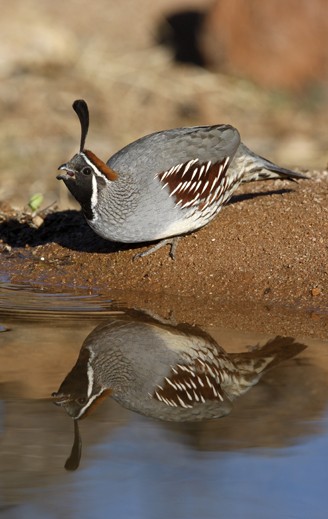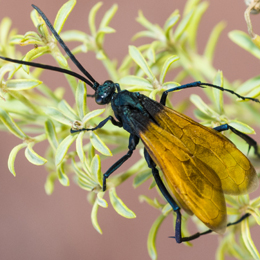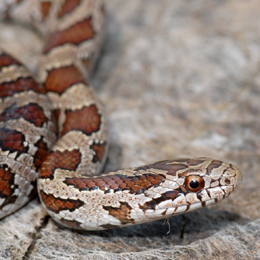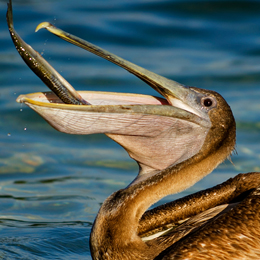Description
The Gambel’s quail or the desert quail is a small bird belonging to the family Odontophoridae, a family consisting of New World quails. These quails are quite similar to Old World quails but only distantly related to them. Dr. William Gambel (1823-1849) was the first trained naturalist to discover and study this species. In 1841, when he was only 18, William Gambel carried out an extensive expedition to collect specimens of plants and birds in California for his mentor Dr. Thomas Nuttal. He discovered several new species of birds during this trip. Two species, the Gambel’s quail (Callipepla gambelii) and the Mountain chickadee (Poecile gambeli), have been named in honor of this famous naturalist of the Southwestern United States.
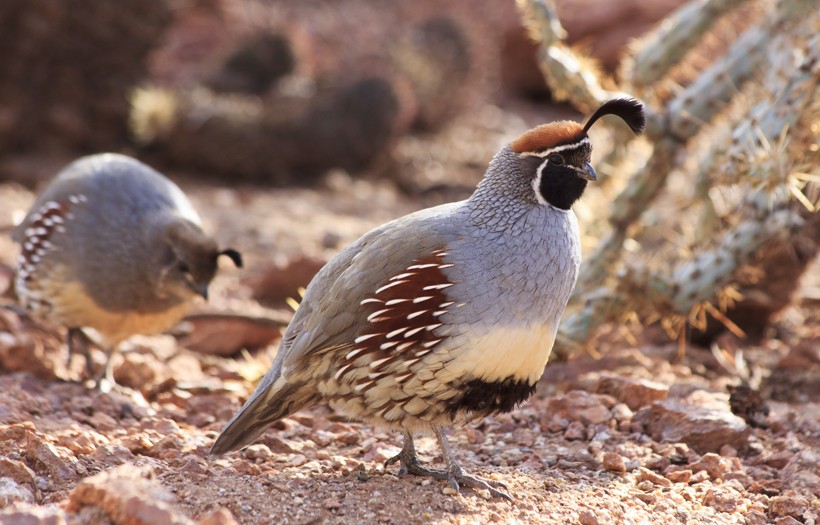
The Gambel’s quail possess a bluish-gray colored plumage, with scaly feathers on the lower side of the body.
?
Image credits: tntphototravis/Shutterstock
The Gambel’s quail possess a bluish-gray colored plumage, with scaly feathers on the lower side of the body. The eye-catching feature is its unique black top-knot, which is shaped like a ‘comma’, and extends forward from the bill. Gambel’s quails are sexually dimorphic birds. The males can be easily distinguished due to its black face and copper colored feathers on top of the head. The black face is surrounded by a thin white colored lining of feathers. Females lack this striking appearance; their body, face and neck are gray in color and the top knot is a little smaller as compared to the males.
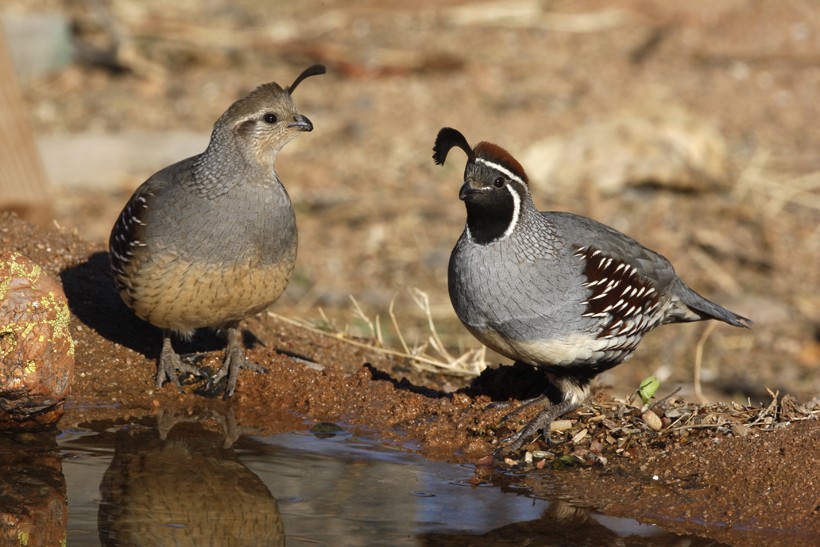
Females lack the black face and copper colored feathers on top of the head
?
Image credits: Erni/Shutterstock
Gambel’s quails are often misunderstood with the California quail, a quail that can be found in the region of North California. Both species share similar physical appearances like bluish-grey plumage, scaly undersides, and the top knot. However, there are some distinguishable differences. The belly feathers of the California quail are visibly scalier compared to the Gambel’s quail. There is a black belly patch on Gambel’s quails while that of California quails looks smaller and is brownish. Experts frequently use these factors to distinguish between these two very similar looking birds.
Though they can survive longer in captivity, the average Gambel’s quail lifespan is only 1.5-2 years in the wild. An adult can weigh around 150-200 grams and measure up to 11-12 inches in length. The exact number of subspecies is yet to be determined precisely. Researchers claim that there could be over 7 to 8 subspecies of Gambel’s quail in western North America. However, the two most widely recognized subspecies are the nominated species C. g. gambelii and C. g. fulvipectus, which is also known as the fulvous-breasted quail. Subspecies C. g. gambelii is more commonly found in Utah, Nevada, and California while the fulvous breasted quail occupies the states of Arizona and New Mexico.
Habitat, Diet & Predators
Gambel’s quails prefer the arid drylands of western North America. These diurnal birds spend their day walking and foraging on the hot desert lands of the Wild West. Their wings are not designed for flying well; they support only short distance flights, which the bird achieves by a sudden explosive flapping of its wings.
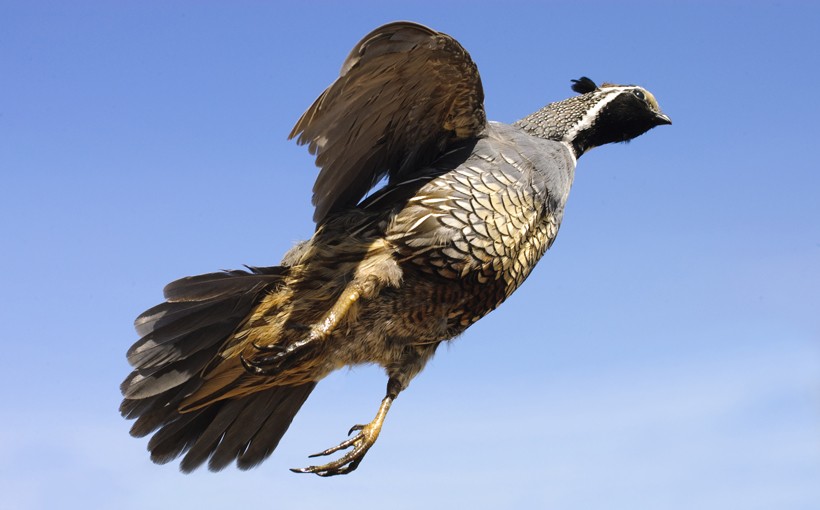
The wings of gambel's quails support only short distance flights
?
Image credits: Jeffrey B. Banke/Shutterstock
Foraging for food is the everyday task for Gambel’s quails. They search for spilled seeds and other plant matter on the desert ground and undergrowths during the day. The diet of the Gambel’s quail is mostly herbivorous in nature, but chicks frequently feed on small insects, to fulfill their nutritional requirements. The dietary habit gradually shifts from insectivorous to herbivorous as the chick grows into an adult.
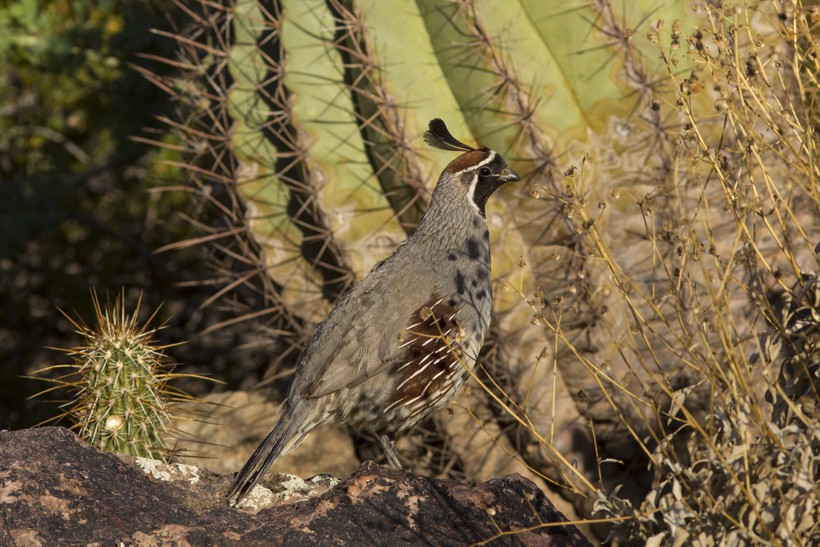
Gambel’s quails prefer the arid drylands of western North America
?
Image credits: tntphototravis/Shutterstock
Being a ground-dwelling bird, the Gambel’s quail proves to be quite vulnerable to predation. The deserts of the west are well known for its venomous reptiles like snakes and Gila monsters. These predators frequently raid Gabel’s quail nests for an easy meal. Mammalian predators like foxes, coyotes and bobcats are also quite efficient in hunting down the flightless quails. Facing such formidable predators, the only defense in a Gambel’s quail’s arsenal is its ability to run quickly on the ground. It can quickly gain speed and vanish into the desert undergrowths to evade predators.
Reproduction and Life Cycle
The Gambel’s quail breeding season starts in April and lasts till the end of July. Males use different methods to attract the female. During courtship, the male struts and bows to the female and also offers her bits of food in order to entice her. Though they are calm and docile in nature, conflicts arise when two males try to court the same female. They fight till one of them backs off while the winner is claiming the courting rights.
Gambel’s quail mating behavior is a monogamous nature, thus, they have only one brood of eggs during a breeding season. On extremely rarely occasions, females leave the chicks and male to move away to a new mate. During this period, couples get aggressive and keep a distance from other couples of the covey. The Gambel’s quail nesting site is just a patch on the ground, which is concealed by vegetation or rocks. The female is responsible for building the nest. This nest is up to 20 cm in diameter and the female lines it with twigs, leaves and grass. A female lays up to 12 eggs per brood. The incubation period lasts approximately 20-24 days. Over the years of observation, researchers have found that a higher number of eggs is laid when there is an adequate amount of rainfall in the habitat. Gambel’s quail eggs are at a very high risk of predation as the nests are easily accessible on the ground.
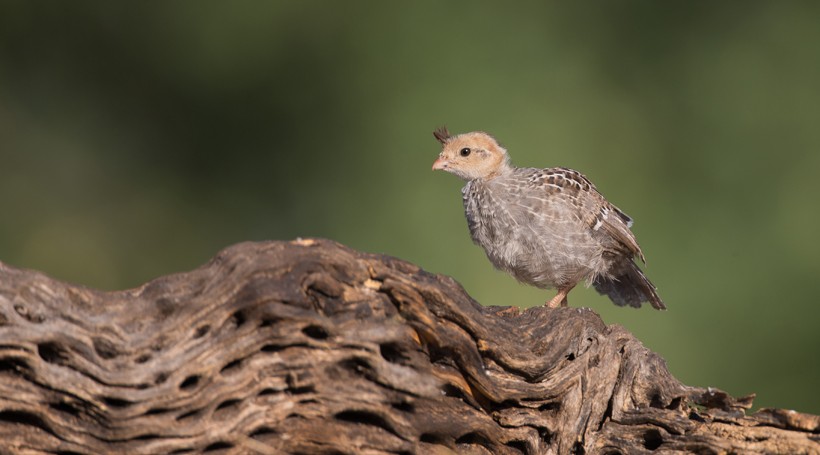
The chicks are capable of moving out of the nest as soon as they hatch.
?
Image credits: Dennis W. Donohue/Shutterstock
The chicks are capable of moving out of the nest as soon as they hatch. They quickly follow their parents and observe them, learning to forage and feed on the desert ground. The adults in the covey protect the young ones from predators while the young ones feed on their own. Mixed parenting is observed in large coveys, where couples take care of chicks born from another female. These chicks are highly vulnerable due to their small size. They often become easy pickings for soaring raptors of the Wild West. Average life expectancy of these quails is only 1.5-2 years in the wild. They reach sexual maturity in one year and males mature a few weeks prior to the females. At a rate of only one brood per year, their population numbers drop drastically when the rainfall is scarce.
Hybrids between Gambel’s quail and California quail occur where ranges of these two species overlap. Hybrids share mixed characteristics of both the species. For example, a Gambel’s quail-California quail offspring can have scaly undersides like a California quail and the black belly patch of a Gambel’s quail.
Behavior and Communication
Gambel’s quails have a unique social lifestyle. They form pairs during the spring season and exhibit an aggressive nature towards other couples. However, after the breeding season, these birds regroup to form coveys that can extend to 25 members under ideal climatic conditions. During this period, the birds are calm and spend most of the time together while foraging for food. Adults display mixed-parenting behavior; the chicks form small groups and feed together while the adults keep an eye on to protect them from predators.
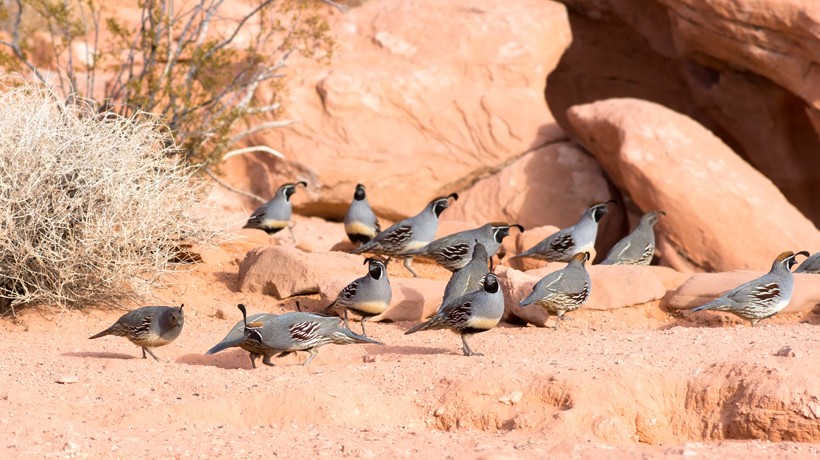
Covey of gambel's quails, nevada state park (Valley of Fire)
?
Image credits: IrinaK/Shutterstock
Like all New World quails, the Gambel’s quails are strictly diurnal. As the sun is setting, the group finds a safe place and sets to roost for the night. They usually take cover in the dense shrubs and trees to keep the group safe from predators as well as to protect them from cold winds.
As they spend most of the year in coveys, the Gambel’s quail depends on several different vocal calls to communicate with other members of the group. Clacking and chattering noises can be heard very often when the group is active. They also produce a mourning ‘qua-el’ sound and a loud ‘chi-ca-go-go’ call, which sounds quite similar to the call of its cousin, the California quail.
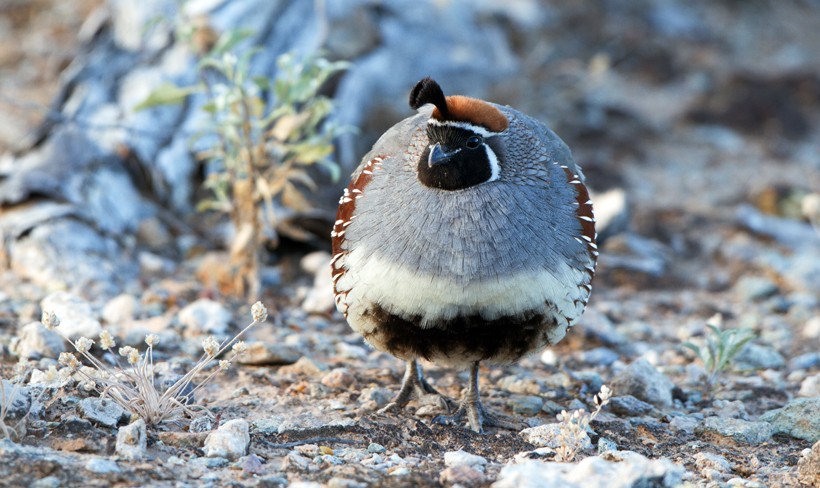
Male quail with ruffled feathers, Arizona's Sonoran Desert
?
Image credits: Martha Marks/Shutterstock
On several instances, birdwatchers have spotted these birds exhibiting attachment to the body of a dead mate or chick. The behavioral characteristic of socialization, monogamy, mixed-parenting and their range of vocalizations are all strong indications that the Gambel’s quail is very intelligent compared to other birds of comparable size.
Population and Distribution
The Gambel’s quail population is distributed over a very large range in North America. They are found in arid regions of California, Colorado, Nevada, Texas, Utah, Arizona, Sonora and in parts of New Mexico. The combined area of the entire range is more than five hundred thousand square kilometers. Their population numbers are quite stable and have been for the past 40 years. Their adaptability and social lifestyle are the key factors behind the stability of this species in the harsh dry deserts of North America.
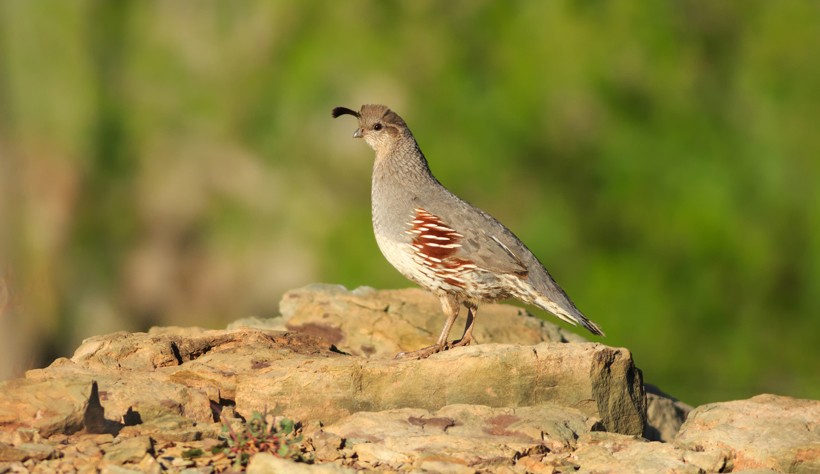
Female gambel's quail nearby St George, Utah
?
Image credits: Maria Jeffs/Shutterstock
Gambel’s quails may look extremely vulnerable to predation but together in coveys, they find safety in numbers. Mixed-parenting also allows more chicks to survive and become adults every year. Based on the above-mentioned factors, the IUCN classifies Callipepla gambelii as ‘Least Concern’ species.
However, habitat loss and human interference may pose a threat to the population in future. Rising temperatures, due to factors like global warming and pollution, prove to be fatal for the Gambel’s quail chicks in the harsh desert. Therefore, researchers regularly monitor the population numbers and habitat conditions to support the survival of Gambel’s quail species in North America.
Evolution
Gambel’s quails belong to the family Odontophoridae under the order called Galliformes. All the birds of this order share common features like a heavy body, limited ability to fly and ground-feeding behavior. The oldest fossils of galliform-like creatures belong to the late cretaceous period, dating approximately 85 million years ago. Fossils reveal that Austinornis lentus, an extinct bird from the late cretaceous period, was quite closely related to the modern Galliformes.
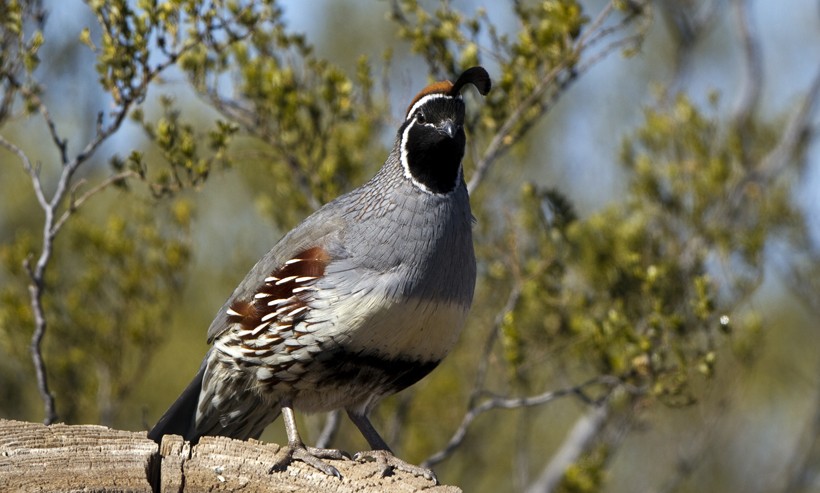
New World quails are classified in the family Odontophoridae whereas Old World quails belong to Phasianidae
?
Image credits: Martha Marks/Shutterstock
Modern Galliformes seem to have evolved from their ancestors during the mid-Eocene period, approximately 45 million years ago. New world quails evolved later in parts of Central and Northern America. Very little is known about the exact ancestry of Gambel’s quail. It is suggested that both the California quail and Gambel’s quail share a common ancestor. Researchers speculate that these two species must’ve split from their ancestor as lately as one million years ago.
Funfacts
- Gambel’s quail have an unique appearance. They are bluish-gray in color, with a top-knot and copper colored feathers on the head.
- Gambel’s quails are monogamous which means they mate with only one partner in a breeding season.
- After breeding, they regroup to form coveys which may consist up to 25 members.
- Though they are adapted to survive the desert, their population flourishes when there is sufficient rainfall in their habitat.
- The bird uses a wide variety of vocal calls to communicate with other individuals of the group.
- They practice mixed-parenting, raising chicks born from other couples of the covey.
- An annual hunt for Gambel’s quails is organized in some places but these hunts have no to marginal effect on the stable population of Gambel’s quail. These events last from October to February.
